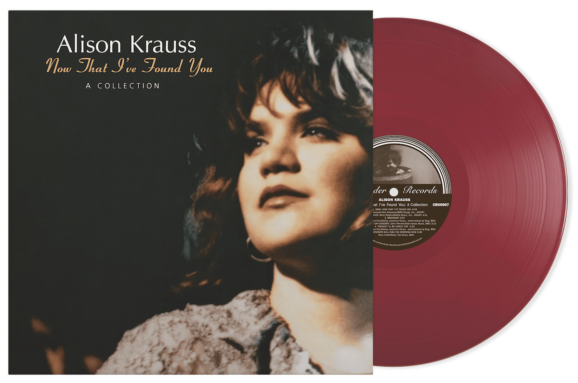When a former violin student encountered her teacher, Cho-Liang Lin, at a Houston, Texas supermarket, she immediately apologized for abandoning her instrument. “Mr. Lin, I don’t want you to get mad,” she said, “but I’m not playing the violin anymore.”
Lin’s reaction surprised her. Rather than disappointment, the Juilliard and Rice University professor expressed genuine enthusiasm. The student had transitioned to banking and, according to a classmate, was already driving a Porsche within her first year.
This exchange reflects a broader trend in music education. Data from multiple studies indicates that more than 50% of music students quit their instruments within one or two years of starting. Additionally, approximately half of all students drop out of music lessons by age 17, according to research published in PMC’s study on musical activities.
Cho-Liang Lin, who began violin at age five in Taiwan and studied under Dorothy DeLay at Juilliard, brings a unique perspective to this phenomenon. During his 18-year tenure directing La Jolla SummerFest, where he commissioned 54 new works, the acclaimed violinist developed an unconventional view of career transitions among music majors. His ongoing performance schedule, including upcoming engagements at major festivals, demonstrates his continued dedication to both performance and education.
The Numbers Behind Musical Careers
Statistics paint a stark picture for aspiring professional musicians. Lin recalls a teacher’s frank assessment to her students: “Only 1 of the 7 of you in this room will obtain a successful orchestra position.”
Recent data supports this projection. While the Music School Central study found that over 50% of music performance majors secure work relevant to their major within four months of graduation, the definition of “relevant” extends well beyond traditional performance roles. Many graduates find themselves in music-adjacent positions or entirely different fields.
Context matters when evaluating these outcomes. According to the National Center for Education Statistics, only 27% of all college graduates work in fields directly related to their undergraduate major. Music majors face particular challenges in a limited job market where orchestra positions remain scarce and competition is intense.
Cho-Liang Lin acknowledges these realities in his teaching. “I try to get them to focus as much as I can,” he states, while addressing concerns about student burnout in modern education. “Nowadays, it’s really incredible. I find students very easily distracted. There’s so many things out there on the internet, whether it’s YouTube, texting, reading up on whatever gossip they wish to catch up.”
Alternative Career Paths for Music Graduates
The conversation at the supermarket continued with Cho-Liang Lin offering unexpected encouragement to his former student. “I don’t mind that you quit the violin. You could always pick the violin up and play in an amateur orchestra. That’s a lot of fun. And you’re certainly good enough for that. But now if you become a very successful banker, you can do a lot of good in the music world.”
This perspective reflects findings from the Strategic National Arts Alumni Project (SNAAP), which identified transferable skills developed by arts graduates including critical thinking, creativity, teamwork, project management, and leadership abilities. These competencies prove valuable across various industries.
Lin recounted another instance involving a student who chose medical school over music. His response was equally supportive. “Those are the things that are very much unsung, but I think are very important. You have to let go of some students when you say a career is not looking particularly good, but what else can they do that will make life meaningful for them?”
Industry analysis reveals that contemporary musicians increasingly adopt “portfolio careers,” combining multiple income streams. According to MajoringInMusic.com, 21st century musicians often blend performance with teaching, administration, or work in unrelated fields. Some abandon performance entirely while maintaining professional connections through other avenues.
Practice Culture and Modern Challenges
Technology has fundamentally altered how students approach music education. “Technology democratizes education,” Cho-Liang Lin observes, “but it’s still crucial to maintain the personal connection that music thrives on.”
The contrast between past and present practice methods is significant. Lin describes his own training regimen: “Once I walk into a practice room, I do nothing except practice.” He practiced without modern distractions, noting there was “no phone, no cell phone, not even email or not even fax.”
Current students face different challenges. Research from Children’s Music Workshop indicates that parents often treat music as less important than core academic subjects, contributing to higher dropout rates. Students struggle with maintaining focus during practice sessions.
Lin addresses this directly with his students. “If you do quality practicing for one hour, that’s better than two hours of wandering around, like texting somebody three minutes and then practice another five minutes and then back to texting three minutes.”
Economic factors compound these challenges. Entry-level salaries for music performance majors range from $20,000 to over $60,000 annually, according to the Miksza and Hime study, with significant variation based on career path. Lin, who debuted with the Philadelphia Orchestra on 24 hours’ notice, acknowledges how the economics of classical music have evolved. “What really counts is your quality of playing, your integrity as a musician and your ultimate skill,” he maintains.
Redefining Success in Music
A revealing moment came when Cho-Liang Lin performed with an amateur orchestra in New York. His initial expectations were low, anticipating “sheer cacophony.” Instead, he discovered accomplished musicians who had chosen alternative careers.
“They’re not necessarily untrained musicians, but they actually all attended top music schools except after graduating, they all opted to do something else,” Lin explained. The ensemble included employees from Google, Chase Manhattan, and Facebook who gathered three times annually to perform.
YouGov research indicates that two-thirds of Americans have learned to play musical instruments at some point, though most no longer play regularly. Among those who quit, 55% of former electric guitar players and 51% of former acoustic guitar players express regret about stopping.
Lin addressed this broader perspective while directing a youth music camp in Taiwan. “Regardless what your career path, I hope you learn how to work with other people. You are in an orchestra and you have to play well in order to support others, but you’re not always the star.” His career continues to exemplify this collaborative spirit, as seen in recent chamber music performances across prestigious venues.
Cho-Liang Lin’s Student Outcomes
After decades in music education, Cho-Liang Lin has developed a nuanced approach to student success. “The idea of being devoted to my students is very important,” he states. “It’s the ones that are less fortunate… they didn’t come equipped with the greatest talent, but then try to get them to do something meaningful. That’s really, really important.”
His teaching philosophy extends beyond traditional metrics of success. While celebrating students who secure orchestra positions, he equally values those who find fulfillment elsewhere. The Porsche-driving banker and the medical student represent valid outcomes from music education. Even as Lin continues performing internationally, he maintains this inclusive view of musical careers.
“There’s nothing wrong with changing career path after you finish a good music school,” Cho-Liang Lin maintains. This pragmatic approach acknowledges both the limited opportunities in professional music and the valuable skills gained through music education.
The implications extend beyond individual career choices. Music education provides foundational skills applicable across professions, even when graduates never perform professionally again. For the 90% who leave their instruments behind, the training often continues to influence their work in unexpected ways.








